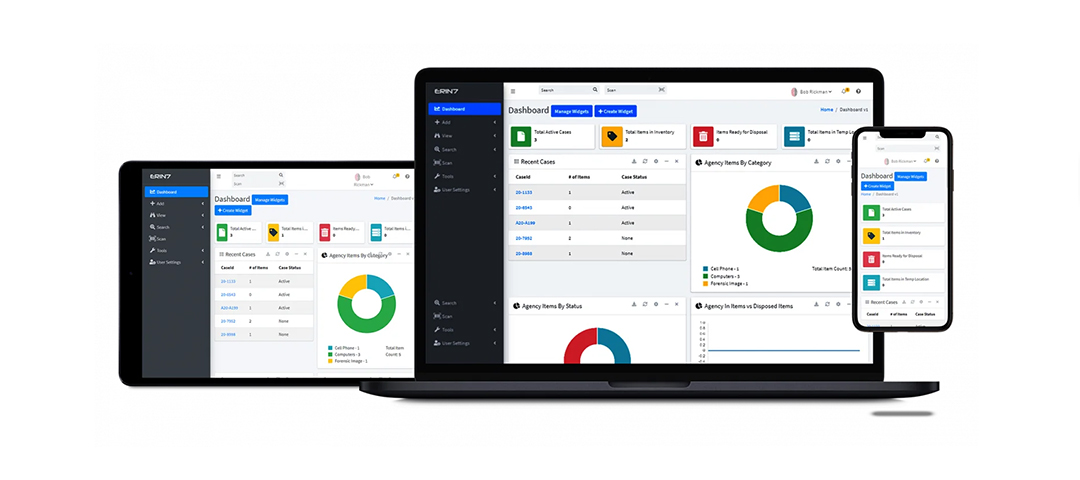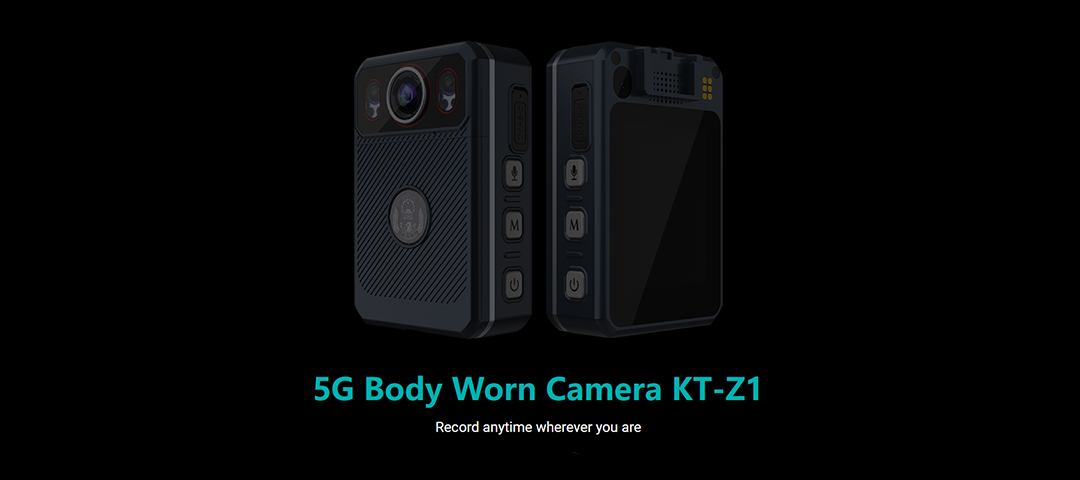Introduction To Body Worn Cameras
Body-worn cameras (BWCs) have become increasingly popular in recent years as a tool for law enforcement agencies to improve transparency and accountability. Studies have demonstrated that employing these cameras can lower the number of grievances made against law enforcement officials and enhance the confidence that the public has in them. However, the use of BWCs also presents challenges when it comes to managing the large amounts of footage that they produce. In this blog post, we will explore the benefits of BWCs and evidence management tools, and how they work together to improve law enforcement operations.
Body-worn cameras are small, portable cameras that are worn by police officers, security personnel, and other law enforcement officials. Typically, officers attach these cameras to their uniform or helmet to capture audio and video footage of their engagements with individuals. The recordings obtained from BWCs can serve as evidence in criminal inquiries, legal proceedings, and internal inspections.
One of the main benefits of BWCs is that they provide an objective account of interactions between law enforcement and the public. This can help to reduce complaints against police officers and improve public trust in law enforcement agencies. Research has shown that the use of BWCs can reduce the use of force by police officers and improve the quality of evidence presented in court.
However, the use of BWCs also presents challenges when it comes to managing the large amounts of footage that they produce. Each camera can generate hours of footage per shift, which can quickly overwhelm evidence management systems. To address this challenge, evidence management tools have been developed to help law enforcement agencies manage, store, and analyze the footage captured by BWCs.

Introduction To Evidence Management Tools
Evidence management tools are software solutions that are designed to help agencies manage and analyze large amounts of digital evidence. These tools can help agencies store, categorize, and search through footage captured by BWCs, as well as other types of digital evidence, such as surveillance footage and body camera footage from other officers. In addition, these tools can assist agencies in scrutinizing the footage to recognize patterns and trends, which can be utilized to enhance training and operational procedures.
One example of an evidence management tool is Axon Evidence, which is used by many law enforcement agencies across the country. Axon Evidence is a cloud-based platform that allows agencies to store and manage digital evidence, including footage captured by BWCs. Utilizing sophisticated algorithms, the platform categorizes and labels the footage, simplifying the process for agencies to locate and retrieve particular recordings as necessary. Axon Evidence also allows agencies to share evidence with other agencies and prosecutors securely.
Another example of an evidence management tool is Digital Evidence Manager (DEM), which is used by the New York City Police Department (NYPD). DEM is a web-based platform that allows officers to upload and manage digital evidence, including footage captured by BWCs. The platform includes features such as facial recognition and license plate recognition, which can help officers identify suspects and vehicles captured in footage.
In addition to providing benefits for law enforcement agencies, evidence management tools can also benefit the public. By making it easier for agencies to manage and analyze footage captured by BWCs, evidence management tools can help to ensure that justice is served in criminal investigations. They can also help to build trust between law enforcement agencies and the public by providing greater transparency and accountability.
In conclusion, body-worn cameras and evidence management tools are important tools for law enforcement agencies looking to improve transparency and accountability. BWCs provide an objective account of interactions between law enforcement and the public, while evidence management tools help agencies manage, store, and analyze the footage captured by BWCs. By working together, BWCs and evidence management tools can help to improve law enforcement operations and ultimately, enhance public safety.

Benefits Of Body-Worn Cameras (Bwcs)
Small gadgets known as body-worn cameras are generally worn on the clothing or equipment of law enforcement officers, security personnel, or other professionals. They are designed to capture audio and video recordings of incidents, interactions, and events from the wearer's perspective. Here are some key points about BWCs.
Accountability and Transparency: Body-worn cameras (BWCs) play a vital role in promoting accountability and transparency in interactions between law enforcement officers or personnel and the public. By providing an objective record of these encounters, BWCs serve as a powerful tool in ensuring accuracy and impartiality during investigations.
Enhancing Officer Performance: BWCs can help improve officer performance and professionalism. The knowledge of being recorded can motivate officers to comply with protocols, implement best practices, and defuse situations that may potentially become volatile.
Evidence Collection: BWC footage can serve as valuable evidence in criminal investigations, disciplinary actions, and legal proceedings. The recordings can provide a firsthand account of events and actions, supporting the investigation process and facilitating more accurate and fair outcomes.
Community Relations: The use of BWCs can aid in fostering trust between law enforcement agencies and the communities they serve. The presence of cameras can enhance transparency and accountability, potentially reducing complaints against officers and fostering better community relations.
Training and Evaluation: BWC footage can be a valuable tool for training purposes and evaluating officer performance. Agencies can review recordings to identify areas for improvement, refine training programs, and enhance overall effectiveness.

Benefits Of Evidence Management Tools
To effectively manage the large volumes of data generated by BWCs and other sources, evidence management tools are employed. These tools facilitate the organization, storage, retrieval, and analysis of digital evidence. Here are some key aspects of evidence management tools.
Secure Storage: Evidence management tools provide secure storage for digital evidence, ensuring its integrity and preventing unauthorized access or tampering. This encompasses functionalities such as encryption, access controls, and audit trails that ensure the continuity of the chain of custody.
Efficient Organization and Retrieval: These tools enable efficient organization and tagging of evidence, making it easier to locate and retrieve specific recordings or associated metadata. This saves time during investigations and legal processes.
Collaboration and Sharing: Evidence management tools often facilitate seamless collaboration and sharing among authorized personnel, allowing for the efficient exchange of evidence across departments, agencies, and jurisdictions.
Integration with Other Systems: Integration with existing systems, such as case management or records management systems, enhances workflow efficiency by providing a centralized platform for evidence management and retrieval.
Scalability and Data Analytics: Evidence management tools often offer scalability to accommodate increasing volumes of digital evidence. They may also incorporate data analytics capabilities, allowing for advanced search, pattern recognition, and insights generation from the collected data.
Together, body-worn cameras and evidence management tools contribute to improved accountability, enhanced transparency, and more effective law enforcement practices. By capturing objective recordings and facilitating efficient evidence management, these technologies promote fairness, accuracy, and trust in the justice system.

Useful Body Worn Cameras Recommended For You Guys
KingTop, a reputable body camera manufacturer, offers the KT-Z1 5G body worn camera, which can effectively record events and capture valuable evidence. The KT-Z1 is not only a powerful tool for deterring bad behavior but also has a positive influence on the behavior of camera wearers and the public. The anti-shake system compensates for unwanted movement of the camera, which can cause blurring during photography, resulting in clear and accurate footage in every situation, including emergencies.
By utilizing LED auxiliary lighting technology, the KingTop body worn camera can promptly adapt to varying light conditions without compromising on clarity, leading to superior video evidence. Furthermore, its infrared night vision mode automatically activates in low-light conditions, enabling the identification of faces up to 9.84 feet away. With the KingTop body worn camera, communities can rely on a compact and durable camcorder designed to withstand impacts, water, and extreme temperatures, thanks to its IP68 certification.
The rugged camcorder supports real-time trajectory playback and multiple modes of positioning, providing accurate location information. The rechargeable battery supports constant use of about 9 hours when it's in 1080P video mode, or you can use about 11 hours in 720P video mode. If it's in standby mode, you can even use up to 100 hours. An extra battery is available to meet long-term working needs.
Thanks to the built-in WiFi and 120°field of view, Kingtop body worn video camera become a formidable competitor to any action camera. The camera also offers Full HD video capture and a built-in mic, as well as a useful 64GB internal memory.
In conclusion, the KingTop KT-Z1 5G body worn camera is a reliable and powerful tool for recording events, capturing valuable evidence, deterring bad behavior, and positively influencing the behavior of camera wearers and the public. The camera's features, including the anti-shake system, LED auxiliary lighting technology, infrared night vision mode, and durability, make it a reliable choice for law enforcement and security personnel.


 French
French German
German Arabic
Arabic Italian
Italian Spanish
Spanish Japanese
Japanese Persian
Persian Korean
Korean Chinese (Simplified)
Chinese (Simplified)









